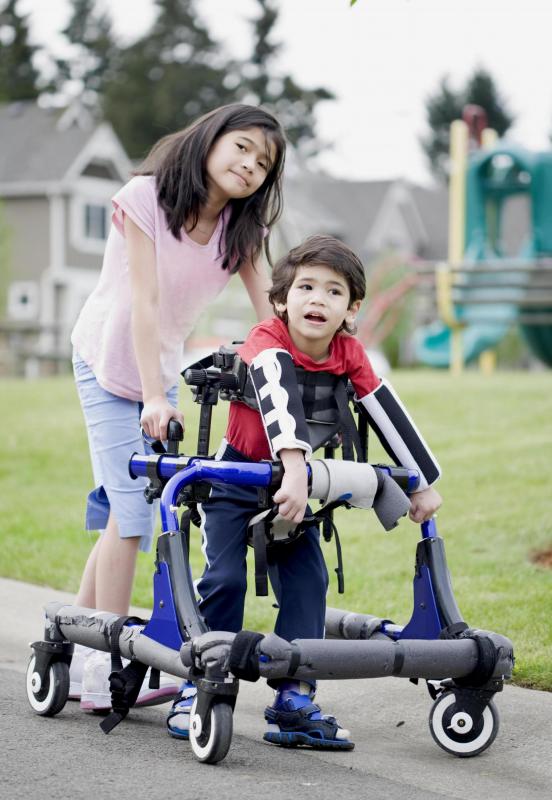At WiseGEEK, we're committed to delivering accurate, trustworthy information. Our expert-authored content is rigorously fact-checked and sourced from credible authorities. Discover how we uphold the highest standards in providing you with reliable knowledge.
What are Cerebral Palsy Seizures?
Cerebral palsy is a group of disorders that affect a person’s movement, balance, and coordination. The degree to which a person is affected typically varies from patient to patient, and some patients have fewer symptoms than others. In some cases, a person with this condition has seizures that develop in relation to the disorder. In such a case, a person is said to have cerebral palsy seizures. There are two types of seizures that are commonly seen in cerebral palsy patients. The first type is called a tonic-clonic seizure, during which the patient typically loses consciousness; the second is called a complex-partial seizure, which doesn't usually render the patient unconscious, but causes strange behaviors that he likely won't remember.
Damage or injury to the brain is at fault when a person is diagnosed with cerebral palsy. Symptoms of the condition may be rather mild, or they can be serious enough to impair even the simplest of movements or coordination efforts. Often, a person with this condition will experience muscle spasms and find walking, running, and balancing difficult. A cerebral palsy patient may also find it hard to write, or even speak in some cases. Additionally, the brain damage that causes cerebral palsy may also cause a patient to have problems with seeing, hearing, or learning; some patients also experience seizures.

While it is possible for a person with cerebral palsy to experience other types of seizures, tonic-clonic and complex-partial cerebral palsy seizures are among the most common. Tonic-clonic cerebral palsy seizures, also called grand mal seizures, often begin with a short scream from the patient. Then, the patient typically falls and experiences muscle stiffening, which marks the tonic stage of this type of seizure. Next, during the clonic phase, the patient usually experiences jerking and twitching of his arms and legs. Often, a cerebral palsy patient will lose control of his bladder during this type of seizure, and he may not remember the event once he regains consciousness.

Complex-partial cerebral palsy seizures don't usually involve the loss of consciousness. Instead, a patient may develop a blank stare and seem unaware of what is happening around him. At that point, he may make random movements that appear clumsy or move his mouth in a manner that resembles chewing. Sometimes a person will try to remove his clothing, wander about, or mumble during a complex-partial seizure. An individual may also feel fear and attempt to get away from others during this type of seizure, but may not remember the incident once it is over.

In many cases, doctors are able to prescribe medications to prevent cerebral palsy seizures. The effectiveness of this type of treatment may depend on the type of seizures a person is having and the drug that is used. Sometimes surgery is used for the treatment of cerebral palsy seizures as well.
AS FEATURED ON:
AS FEATURED ON:













Discuss this Article
Post your comments